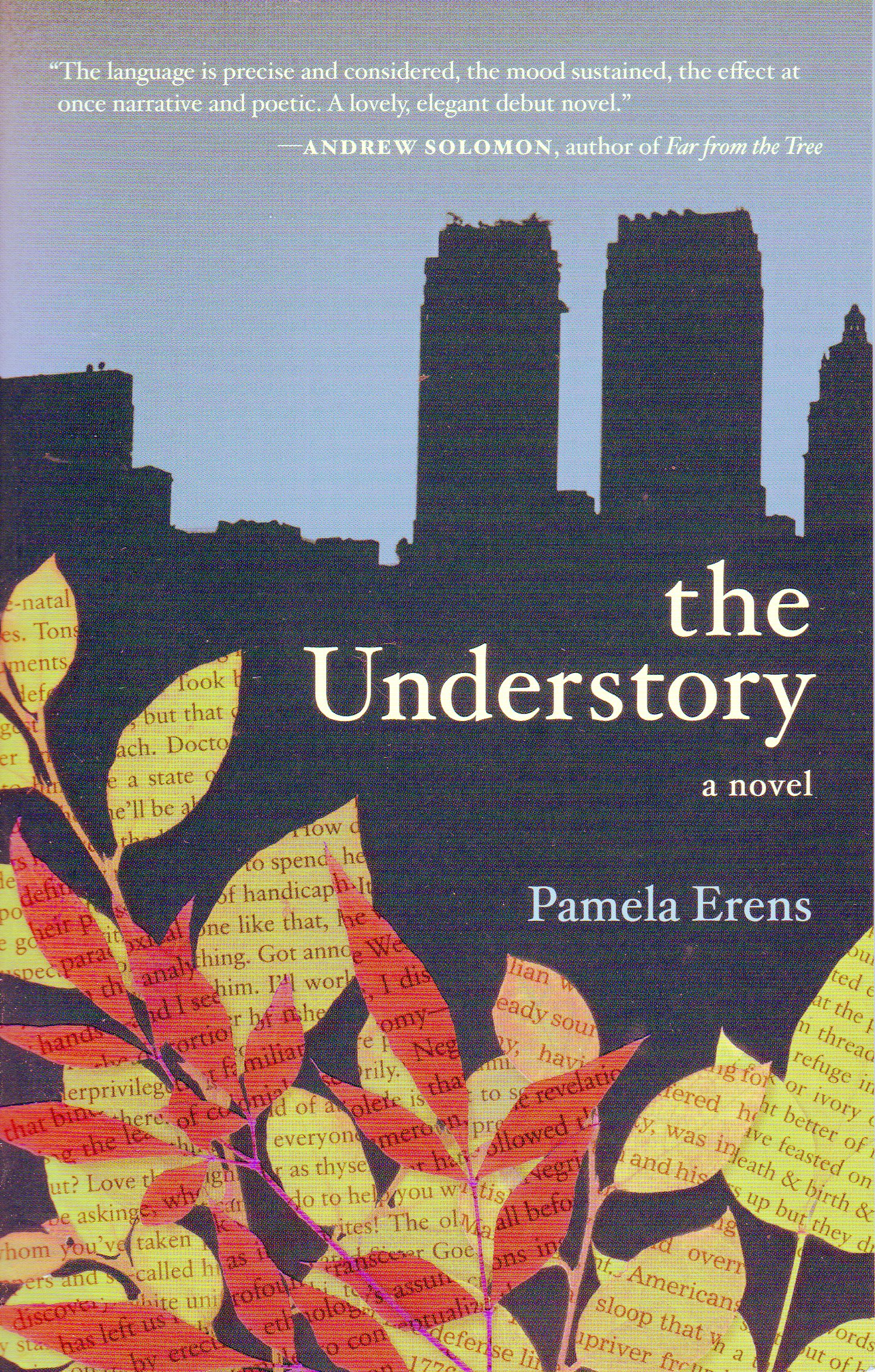The Understory
“Let me explain. I hunt for twins,” says Jack Gorse, narrator of Pamela Erens’s The Understory. “Not your run-of-the-mill fraternals, your IVF side effects, but identicals only, life’s natural aberrations. Nothing so far but Nature can make those mirror images, her rare gift of likeness in the world of infinite variety.” Originally published in 2007 by Ironweed Press and reissued this past April by Tin House Books, The Understory is a book about doubles, a search for second selves and other halves. It is about what it feels like to be alone and the lengths we will go to in order to find completion. “Let me explain. I hunt for twins,” says Jack Gorse, narrator of Pamela Erens’s The Understory. “Not your run-of-the-mill fraternals, your IVF side effects, but identicals only, life’s natural aberrations. Nothing so far but Nature can make those mirror images, her rare gift of likeness in the world of infinite variety.” Originally published in 2007 by Ironweed Press and reissued this past April by Tin House Books, The Understory is a book about doubles, a search for second selves and other halves. It is about what it feels like to be alone and the lengths we will go to in order to find completion.
Jack Gorse is very much alone. He doesn’t have a job. He doesn’t have a family. Technically he doesn’t have a home either—for the past 15 years he has been living illegally in an Upper West Side brownstone under his deceased uncle’s name. During the day he follows a set routine, traveling from his apartment to the Brooklyn Bridge, stopping in the same used bookstore on Columbus Avenue, eating in the same West Fifties diner, catching the same C train home at 6:27 from the Broadway-Nassau station. Jack feels comfort and control in his habits and becomes disturbed if anything is out of place. “Departing from my routine made me unhappy,” he says, “as if my own skin did not fit quite right.” He is sensitive enough that when he finds a book missing at the bookshop it pains him. “I ran my finger over the row, wincing as I passed the closed up spot. It was like feeling a phantom limb.”
A new landlord, however, threatens to disrupt Jack’s routine. His name is Paul Giglio and he is determined to force Jack out. “He made no secret of his plans to renovate the four existing floor-throughs and bring them up to market rate.” In ten days Jack will be on the street with nowhere to go. At the same time, an architect by the name of Patrick stops by to take measurements for the renovation and Jack is immediately taken with him. “Something else struck me about him, and in a moment I knew what it was: he had that odd, unverifiable aura of being a twin.” As the threat of eviction increases, so does Jack’s obsession with Patrick and the book begins to take on the feel of a psychological thriller.
Erens handles the material with nuance, never tilting into melodrama, never reducing the character to a psychological disorder. Instead we touch on universal expressions of helplessness and alienation, of longing for what we cannot have. Thematic connections and symbolism are not so subtle but nonetheless effective, particularly in the case of Jack’s obsession with twins, which is set up early on in the book:
Ultrasound. . . shows that many pregnancies start out as twin pregnancies. Long before quickening, either the twins merge or one is absorbed by the placenta. Up to fifteen percent of us might actually be the surviving half of a twin pair. I imagine that I am a conjoined creature, two souls wrapped into one, and after a while this thought lulls me to sleep.
Even the chapters are divided into twin timelines with most of the novel taking place during the days leading up to Jack’s potential eviction while the in-between chapters are set sometime after the main events at a Buddhist monastery in Vermont, leading us to wonder what brings Jack there, whether he is running towards sanctuary or away from disaster.
As compelling as the book is on its own, part of the value in reading this reprint of The Understory lies in comparing it to Erens’s highly praised follow-up novel The Virgins (2013). Similarly doubled, The Virgins tells two stories at once—that of a young couple at an elite East Coast boarding school, and that of their classmate Bruce Bennett-Jones, the narrator who is imagining their story. Bruce Bennett-Jones and Jack Gorse share many of the same qualities: both are lonely and isolated, both are unlikeable but sympathetic outsiders that observe human connection from an unachievable distance, and both become so frustrated with their exclusion that they act out in desperate attempts to force their way in. Bruce Bennett-Jones is the more complex and compelling of the two, but in reading Jack Gorse’s story, we can see a writer’s obsessions and style begin to take shape. Already in her first book, Erens was asking us how far we can push an emotional outcast until they unravel or explode.
So connected are the two novels, “The Understory” could function as a title for either. What passions do we keep hidden under our social exteriors? they ask. What second selves do we hide away? Given how much deeper Erens is willing to go with each successive work, it will be interesting to see what story of hers will surface next.





